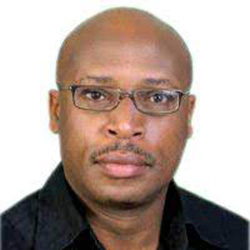

The African Union has deployed 27 peace support operations since adopting the Protocol Establishing the AU Peace and Security Council (AU-PSC) 20 years ago.
They count among important accomplishments for the organisation and the regional economic communities that have deployed them.
But clearly, more needs to be done. Conflicts continue to rue the continent, even as there seems to be a re-emergence of coup d’etats as a feature if we take the overthrow of governments in the so-called coup belt in West and Central Africa, and the Sahel.
These need not have happened. Or at least they would have been prevented, forcefully if need be. This was the point Moussa Faki Mahamat, chairperson of the AU Commission, was making when he plaintively asked, "Where is the African Army? Where is the Standby Force? Where is the Rapid Intervention Brigade?”
Implementation of "these ambitious projects,” he suggested, "would have enhanced the PSC’s intervention capabilities, if only to act as a deterrent.”
He said this while delivering an AU self-assessment at the opening ceremony of the High-Level 20th Anniversary Colloquium of the AU Peace and Security Council in Dar es Salaam a week ago.
Of the PSC pillars, which include the Panel of the Wise, it may be said that the African Standby Force is the head of the spear.
Its perceived missing in action, as Faki laments, therefore, means the PSC has not adequately managed to discharge its mandate to deploy peace support operations to prevent, manage or resolve crises in the continent.
He used a telling metaphor to describe this ineffectiveness, terming it a "congenital weakness” of the Council. An analysis in The Conversation seems to agree, coming to a similar conclusion about the Standby Force, which, to use the spear symbolism, might have been blunt from the very start.
It notes assumptions that were supposed to operationalise the continental force that did not turn out as expected.
It was assumed that the Peace and Security Council, being the mandated organ, would initiate deployment of the standby force.
But as turned out, many of the peace operations deployed over the past 20 years were initiated or led by the regional economic communities (i.e., EAC, ECOWAS, etc), or by groups of member states that formed a coalition of the willing, bypassing the PSC.
It was cumbersome and probably unnecessary to go through the PSC when, in the end, it is individual governments that must authorise deployment of their collective troops.
This worked against another second assumption, that the five AU regions – east, central, north, southern and west – each with its own regional standby force, would both develop and act as an arm of the continental force to deal with a crisis in its region.
This could not work out, one of the reasons being that not all members of a regional community are equally affected by a conflict.
Typically, the analysis notes, countries geographically closest to the conflict have sufficient interest in the conflict’s management or resolution and would be willing to contribute to a peace support operation.
Further, very few African countries have the strategic airlift capability to sustain their forces if they were deployed in a country several borders away.
The third assumption was that establishing standby forces and keeping them ready for action would enable rapid deployments. In theory, this makes sense. In reality, neither the African Union, European Union nor the United Nations has used any standby forces that they have tried to establish over the years.
The reason this hasn’t worked is that each conflict is unique. It requires a specific coalition of states that have a stake in managing the conflict to come together to contain spillover effects.
These seem to answer some of the reasons the African Standby Force appears to have been missing in action.
No doubt this and other issues affecting the PSC and AU in general were discussed. But it is in hindsight the assumptions now appear to have been misconceived, how each assumption has reinforced the defects in the other to blunt the noble intentions of the continental force.
The AU chairman asked many other difficult questions that one could not miss a sense of frustration, being shepherd of an institution he lamented some members seemed to wilfully defy the canons of collective responsibility that set it up.
"I say it loud and clear,” he told delegates, "There is no future for our Peace and Security Architecture without a reimagined, redesigned, repositioned, revitalised, resourced, reoriented Peace and Security Council.”
They must have heard him, seeing that the theme of the Colloquium was, 20 Years of the AU PSC as a Standing Decision-Making Organ: The Next Two Decades of the Peace and Security We Want in Africa.


